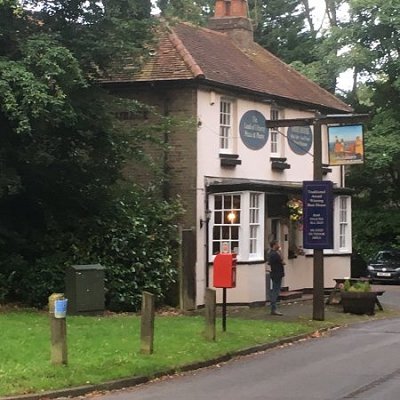
Like us on Facebook
PLACE NAMES


 
|
| Chorleywood
|  |
| |
Chorleywood is a village and civil parish in the Three Rivers District, Hertfordshire, England, in the far southwest of the county on the border with Buckinghamshire, approximately 20 miles (32 km) northwest of Charing Cross. It is part of the London commuter belt and included in the government-defined Greater London Urban Area. The parish of Chorleywood was created in 1845 from part of Rickmansworth. The population of the parish was 11,286 at the 2011 census.
In 2004 a study by The Social Disadvantage Research Centre at the University of Oxford named Chorleywood as the "happiest place" to live in the UK. Of the 32,482 communities surveyed, Chorleywood came out top. More recently, Chorleywood has been ranked as the "least deprived" area in the country by the Department of Communities and Local Government.
Settlement at Chorleywood dates to the Paleolithic era when the plentiful flint supply led to swift development of tools by man. The Romans built a village on the ancient site complete with a mill and brewery.
Though variants have been proposed, the name has been derived from the Anglo-Saxon leah, meaning a clearing or a wood, of the ceorla or peasants. A line runs through Chorleywood that once divided the Kingdoms of Mercia and Wessex and now divides the counties of Hertfordshire and Buckinghamshire. Edward the Confessor gave Chorleywood to the Monastery of St Albans.
By 1278, it was known, perhaps duplicating the "woodland" element, as 'Bosco de Cherle' or 'Churl's Wood', Norman for 'Peasant's Wood'. Upon the Dissolution of the Monasteries, it passed to the Bishopric of London, being renamed 'Charleywoode'. It became Crown property during the reign of Elizabeth I. The Turnpike Act (1663) gave Chorleywood a chance to exploit its strategic position, allowing locals the opportunity to charge civilians to use the road from Hatfield to Reading.
Chorleywood is most famous for its Quakers. Non-conformists flocked to Chorleywood, promised sanctuary by the locals. William Penn founded the Pennsylvania Colony with settlers from Chorleywood, Rickmansworth and nearby towns in southern Buckinghamshire, having lived and married in Chorleywood.
Chorleywood House, a Regency mansion, was built in 1822 by John Barnes, replacing an earlier house. John Saunders Gilliat, the Governor of the Bank of England in 1883-1885, lived in it. In 1892, the house was bought by Lady Ela Sackville Russell, eldest daughter of the 9th Duke of Bedford. She modified and enlarged the house turning the grounds into a model estate with market gardens.
The railway was extended to Chorleywood on 8 July 1889.
When the Local Government Act 1894 created districts as subdivisions of the newly created county councils, Chorleywood became part of the Watford Rural District, which encircled Watford. In 1913, the town was separated from Watford Rural District to become Chorleywood Urban District.
In the early 1960s, researchers at the British Baking Industries Research Association in Chorleywood improved upon an earlier American bread-making process. This resulted in the Chorleywood bread process which is now used in over 80% of commercial bread production throughout the UK.
In the 1973 BBC Television documentary, Metro-land, Sir John Betjeman described Chorleywood as "essential Metro-land".
In 1974, the Chorleywood Urban District, Rickmansworth Urban District and most of Watford Rural District were merged to form the Three Rivers non-metropolitan district.
|
 Feel free to Email me any additions or corrections Feel free to Email me any additions or corrections
LINKS AVAILABLE TO YOUR SITE
| |





